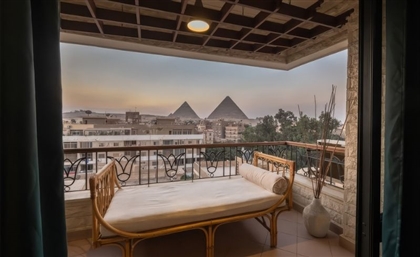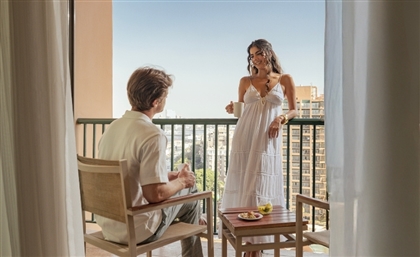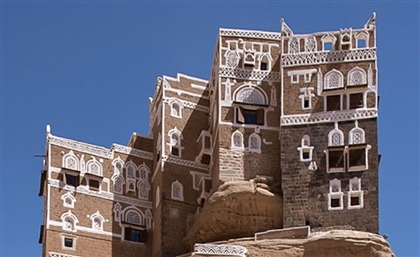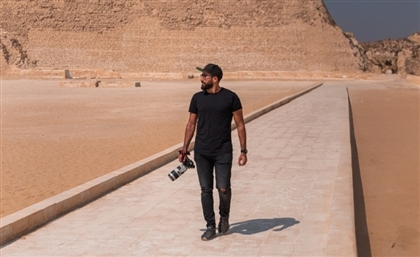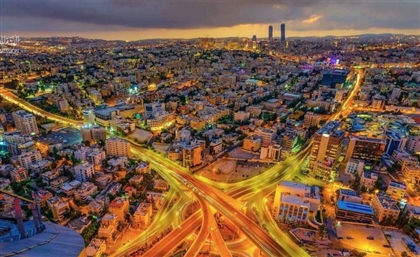Untangling the History Behind Zamalek’s Storied Cairo Marriott Hotel
Built in 1869 by Egypt’s then-ruler Khedive Ismail for the Suez Canal’s inaugural celebrations, El Gezirah Palace served as a haven to literal royalty from all over the globe.
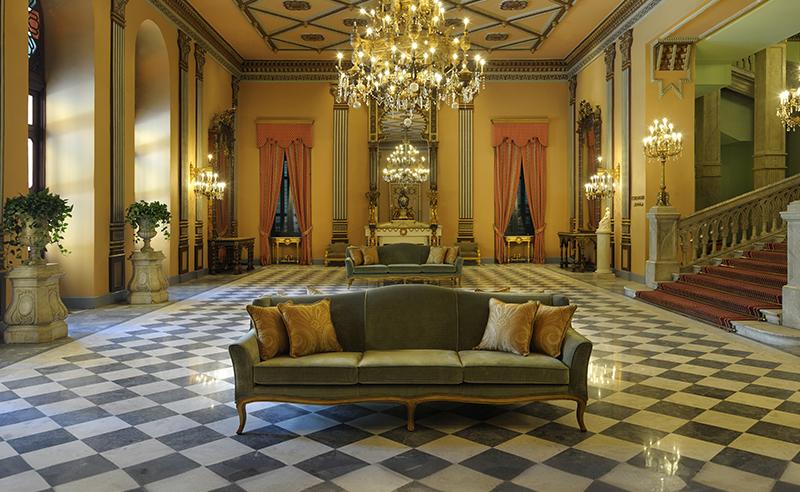
During the seemingly inconspicuous year of 1863, a certain series of meetings took place which would eventually draw the blueprints for a palace, and build a hallmark of modern-day Cairo: El Gezirah Palace. Commissioned by Egypt’s then-ruler Khedive Ismail to host royal guests during the grand inauguration of the Suez Canal, the ambitious project began its journey under the design leadership of Austrian architect Julius Franz. This marked the inception of a monumental architectural endeavour, laying the foundation for what would later evolve into the iconic Cairo Marriott Hotel.
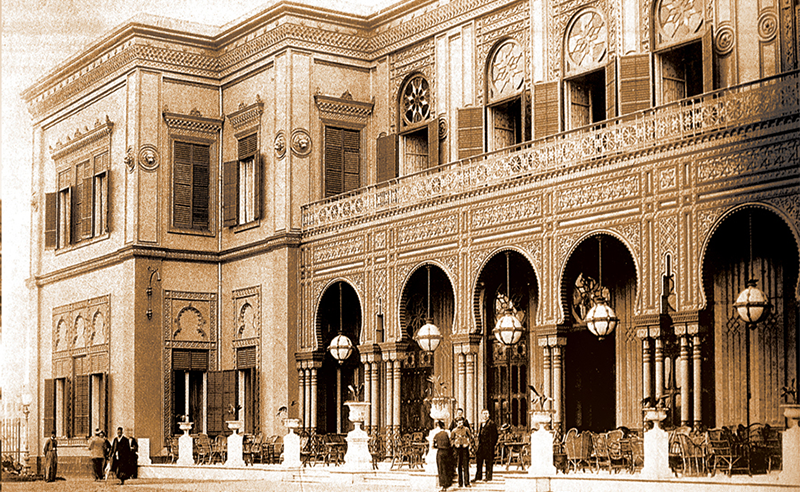
Khedive Ismail, armed with vision and intent, entrusted Julius Franz with a mission of monumental proportions. The task: to turn dreams into tangible elegance, a palace befitting the grandeur of the imminent inauguration. As blueprints were unfurled and sketches came to life, the essence of El Gezirah Palace began its slow metamorphosis. The unfolding construction bore a singular purpose: to welcome Empress Eugenie, the wife of French Emperor Napoleon III. Khedive Ismail's vision extended beyond conventional hospitality; he aimed to replicate the same refined ambiance of Eugenie's Tuileries Palace in France within the walls of El Gezirah palace.
Progress was initially slow, prompting a need for swift completion due to the looming date of the celebrations and the arrival of the guest of honour. To meet the deadline, French architect De Curel Del Rosso was enlisted for additional expertise. However, it was the German architect Carl von Diebitsch who ultimately infused the palace with its captivating allure, drawing inspiration from Moorish Spain, a touch chosen specifically to impress Eugenie.
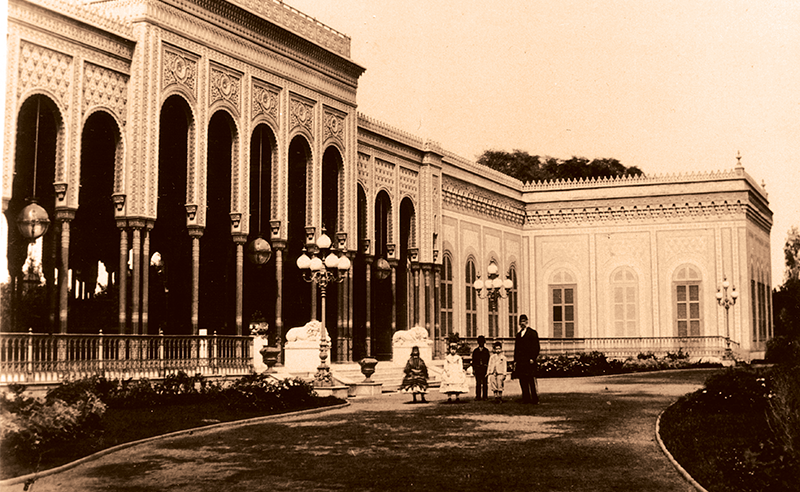
In shaping the aesthetic elements, Austrian architect Julius Franz and De Curel Del Rosso contributed to the design, while the interior design mastery of German architect Carl von Diebitsch left an indelible mark. Von Diebitsch not only conceptualised the decor but prefabricated the furniture, draperies, and other internal fittings. The collaboration of these architects culminated in the creation of a palace that seamlessly blended elegance with Spanish and Islamic influences.
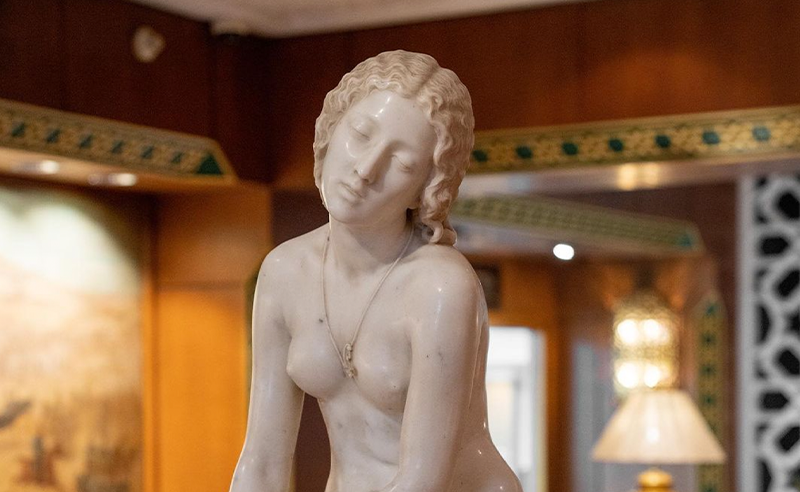 Drawing from the understated elegance of Eugenie's residence, El Gezirah palace was fashioned into a fusion of neoclassical design and subtle nods to the Islamic aesthetic. Utilising marble designs, Mashrabiya-style windows and balconies, they subtly echoed the Empress's tastes. This intentional mirroring bestowed upon El Gezirah Palace a distinctive character; a cultural blend where European sophistication met Egyptian heritage.
Drawing from the understated elegance of Eugenie's residence, El Gezirah palace was fashioned into a fusion of neoclassical design and subtle nods to the Islamic aesthetic. Utilising marble designs, Mashrabiya-style windows and balconies, they subtly echoed the Empress's tastes. This intentional mirroring bestowed upon El Gezirah Palace a distinctive character; a cultural blend where European sophistication met Egyptian heritage.
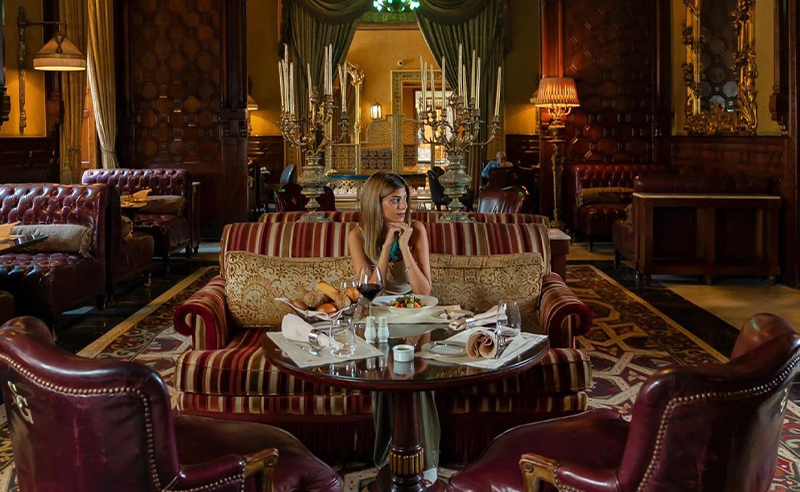
Beyond its architectural charm, El Gezirah Palace played a crucial role in hosting prominent figures during the Suez Canal festivities, solidifying its cultural significance. The palace became a diplomatic hub where the world’s monarchs, political luminaries, dignitaries and cultural icons converged. Its walls witnessed not only the celebration of historic moments but also the delicate dance of international relations against a backdrop of opulent design.
Amongst its most esteemed guests, El Gezirah Palace welcomed within its regal walls Empress Eugenie of France, Emperor Franz Joseph of Austria, Syrian landlord Habib Lotfallah - who later purchased the palace for himself - and the renowned English novelist Agatha Christie.

Throughout its history, El Gezirah Palace bore witness to many celebrations. Among these, the Suez Canal inauguration is indeed the stand out, marked by famed Italian composer Verdi's performance of ‘Rigoletto’. El Gezirah Palace also hosted opulent royal weddings, such as the extravagant 40-day celebration for the marriage of Khedive Ismail's son. In the 1930s, the palace witnessed the union of Prime Minister Nahhas Pasha's daughter, and in later years, a boat party in front of the palace celebrated the union of King Farouk and Queen Nariman.
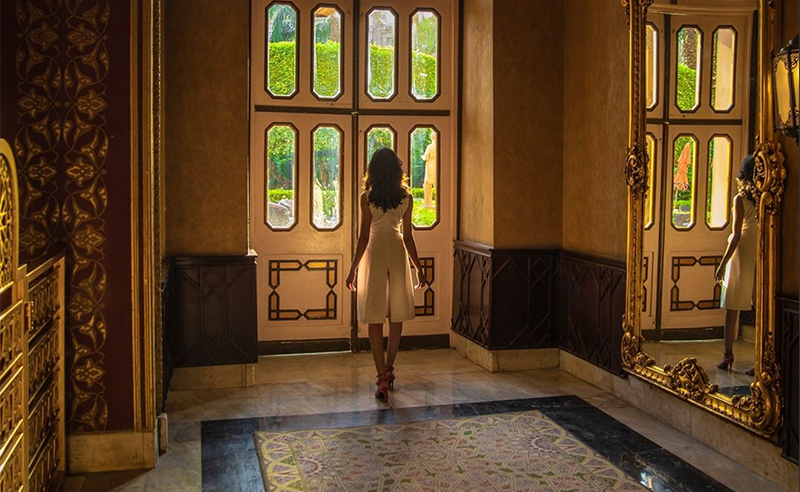
Since its construction in 1869, El Gezirah Palace underwent a series of transformations and changes in ownership. In 1879, while operating as the exclusive Gezira Palace Hotel, the palace faced financial woes, leading to its confiscation by the state. The Egyptian Hotels Company subsequently took control. In 1919, the palace was sold to Habib Lotfallah, a Syrian landlord, who transformed it into a private residence.
Then in 1961, during the time of President Gamal Abdel Nasser, the palace was nationalised and became the Omar Khayyam Hotel. In the 1970s, the property was handed over to Marriott International for management, restoring the original palace and building two modern towers housing 1,064 rooms, becoming The Cairo Marriott Hotel & Omar Khayyam Casino.
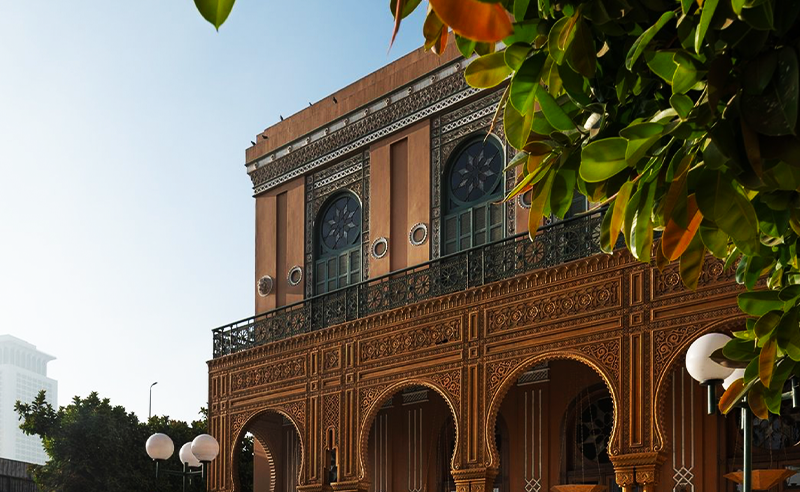
Today, the Cairo Marriott Hotel preserves the essence of El Gezirah Palace. The Gezirah Palace, now the hotel's main building and entrance, maintains its original grandeur. Guest rooms in the Gezirah and Zamalek towers, built in the 1970s, blend modernity with history. The untouched ballrooms - Salon Royal, Eugenie, Verdi, Vert, Memphis, Thebes and Sakkara - whisper tales of bygone celebrations. The Saraya Gallery restaurant and Billiard Bar stand as timeless relics, inviting guests to experience its historic charm. In every nook, the hotel echoes the legacy of El Gezirah Palace.
At the Cairo Marriott Hotel, authentic statues, crafted with precision, stand as silent sentinels holding stories of bygone eras. The marbles underfoot once bore witness to the footsteps of royalty and dignitaries. Above, chandeliers gracefully suspend from the ceiling, casting a warm glow that dances upon the ornate details.
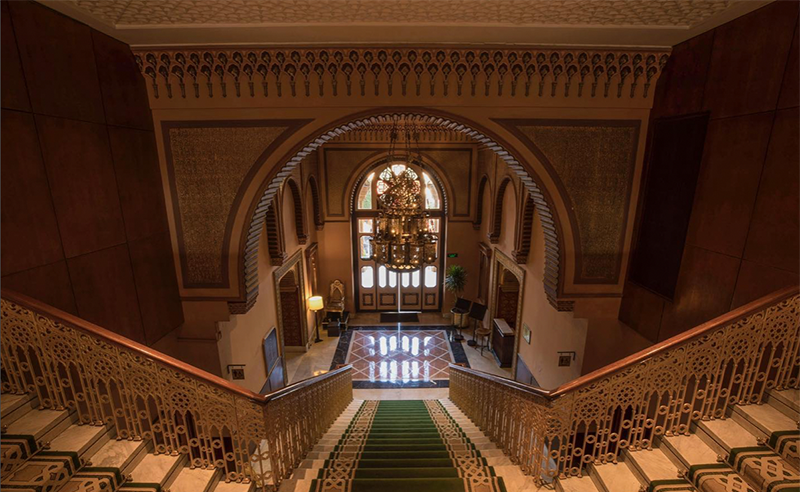
While one can write extensively about El Gezirah Palace throughout time, it is perhaps best experienced in person. If your plans for next weekend are not set in stone, you might want to consider visiting the Cairo Marriott Hotel for a day tour with a historian reciting the hidden stories within every nook and cranny of the once royal residence.
To plan your tour, contact The Cairo Marriott Hotel at 0227283000 or visit the concierge desk in the hotel’s lobby.
- Previous Article The Best Trips to Book This Winter Break
- Next Article Travel Across History on Egypt's Most Iconic Bridges
Trending This Month
-
Nov 29, 2025




